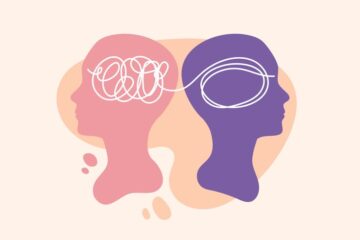Diabetes is a chronic health condition that affects millions of people worldwide. While many people have heard of diabetes, not everyone understands that there are different types, each with distinct causes, risk factors, and management strategies. The two most common forms of diabetes are Type 1 and Type 2 diabetes. While they share similarities, they differ significantly in their origins, treatment approaches, and daily management. This article will break down the key differences between Type 1 and Type 2 diabetes, helping you better understand each condition.
What is Type 1 Diabetes?
Type 1 diabetes is an autoimmune disease in which the body’s immune system mistakenly attacks the insulin-producing beta cells in the pancreas. Insulin is a hormone that regulates blood sugar levels by allowing glucose to enter cells and be used for energy. Without insulin, blood sugar levels rise to dangerously high levels, leading to serious health complications.
Key Characteristics of Type 1 Diabetes:
- Cause: Autoimmune destruction of insulin-producing cells.
- Onset: Typically diagnosed in children, teenagers, or young adults, but can develop at any age.
- Insulin Dependence: People with Type 1 diabetes must take insulin injections or use an insulin pump for survival.
- Symptoms: Rapid onset of symptoms such as excessive thirst, frequent urination, extreme fatigue, unexplained weight loss, and blurred vision.
- Management: Requires daily insulin administration, blood sugar monitoring, and careful carbohydrate intake management.
- Prevention: There is no known way to prevent Type 1 diabetes as it is not caused by lifestyle factors.
What is Type 2 Diabetes?
Type 2 diabetes is a metabolic disorder that develops when the body becomes resistant to insulin or when the pancreas does not produce enough insulin to maintain normal blood sugar levels. Unlike Type 1 diabetes, Type 2 is strongly linked to lifestyle factors such as diet, physical activity, and obesity.
Key Characteristics of Type 2 Diabetes:
- Cause: Insulin resistance and reduced insulin production.
- Onset: Most commonly develops in adults over 45, but increasingly seen in younger individuals due to rising obesity rates.
- Insulin Dependence: Not always required. Many people with Type 2 can manage their condition with diet, exercise, and oral medications. Some may eventually need insulin.
- Symptoms: Often develops gradually, with mild or no symptoms. Common signs include increased thirst, frequent urination, fatigue, slow wound healing, and darkened skin patches (acanthosis nigricans).
- Management: Lifestyle changes (healthy diet, regular exercise, weight management), oral medications, and sometimes insulin therapy.
- Prevention: Type 2 diabetes can often be prevented or delayed with healthy lifestyle choices.
Risk Factors for Each Type
Risk Factors for Type 1 Diabetes:
- Family history (having a parent or sibling with Type 1)
- Certain viral infections that may trigger an autoimmune response
- Genetics (presence of specific genes like HLA-DR3 and HLA-DR4)
Risk Factors for Type 2 Diabetes:
- Being overweight or obese
- Physical inactivity
- Family history of diabetes
- High blood pressure or cholesterol
- Polycystic ovary syndrome (PCOS)
- History of gestational diabetes (diabetes during pregnancy)
Living with Diabetes: The Daily Realities
Regardless of type, managing diabetes requires dedication and lifestyle adjustments. People with Type 1 diabetes must carefully monitor their blood sugar and adjust insulin doses accordingly. They often use continuous glucose monitors (CGMs) or insulin pumps to maintain blood sugar stability.
For Type 2 diabetes, management often starts with diet and exercise. Many people can control their blood sugar levels by adopting a balanced diet rich in fiber, lean proteins, and healthy fats while reducing processed foods and sugary beverages. Weight loss (if overweight) and regular physical activity can significantly improve insulin sensitivity, reducing or even eliminating the need for medications.
The Importance of Early Diagnosis and Treatment
Because diabetes can lead to serious complications such as heart disease, kidney damage, nerve problems, and vision loss, early diagnosis and proper management are crucial. Regular check-ups, blood sugar monitoring, and lifestyle adjustments can help prevent complications and improve overall well-being.
Conclusion
Understanding the differences between Type 1 and Type 2 diabetes is essential for those living with the condition, caregivers, and the general public. While both involve problems with insulin and blood sugar regulation, their causes, treatments, and risk factors are vastly different.
If you or someone you know has symptoms of diabetes, seeking medical advice and getting tested early can lead to better management and a healthier life. Education, awareness, and support play key roles in helping those with diabetes live well and thrive despite the challenges.


